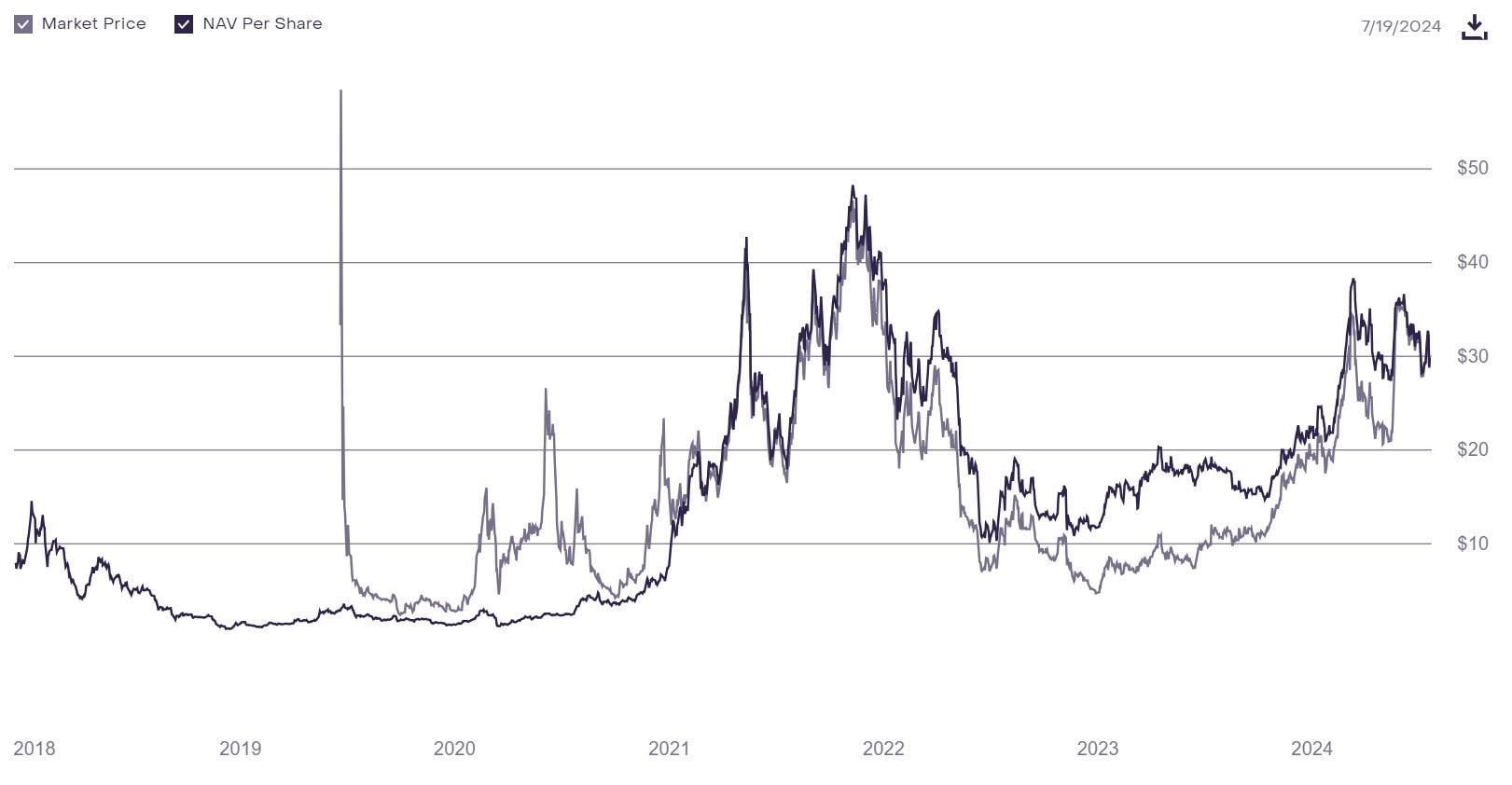News - The start of ETF trading: The perfect time or time to wait?
By
The start of ETF trading: The perfect time or time to wait?
On July 23, Ethereum Spot ETFs will be released for trading in the US. Many people are therefore wondering if this is the perfect time, or if they would be better off waiting.
In this post you will read:
What lessons can be learned from the launch of Bitcoin Spot ETFs
What are the dangers of converting from the Grayscale Ethereum Trust to the Grayscale Ethereum ETF
Why there is great surprise potential in Ethereum Spot ETFs
As announced by the Chicago Board Options Exchange (CBOE), Ethereum Spot ETFs will be released for trading as early as tomorrow, July 23. There is plenty of speculation as to whether the Ether price will fall after that, as was the case with the admission of the Bitcoin Spot ETFs, or instead rise. There are good reasons to believe that this time will be different from the Bitcoin ETF.
Okay everyone. Here are the details for the #Ethereum ETFs that we expect to launch next week. We are only missing details for Proshares's ETF. 7 of the 10 funds have fee waivers. pic.twitter.com/5v3QnHOeub
— James Seyffart (@JSeyff) July 17, 2024
Lessons from Bitcoin Spot ETFs
When Bitcoin ETFs were approved in January 2024, the price immediately dropped before weeks later the price surge began. This happened because a lot of Bitcoin hit the market all at once due to a change at Grayscale. When Grayscale converted their Bitcoin Trust to an ETF, many investors sold their shares at the normal market price. This happened because the Bitcoin Trust was previously trading at a discount.
At the same time, the Grayscale Bitcoin ETF was by far the most expensive Bitcoin ETF, prompting further selling. Inflows into Bitcoin ETFs from BlackRock, Fidelity and others also could not initially absorb the selling pressure. The question now is whether the same will happen with the Ether Spot ETFs.
The Grayscale Effect
Again, when converting the Grayscale Ethereum Trust to an ETF, we see that it is the most expensive Ethereum ETF. The management fee of the Grayscale ETH ETF is ten times that of the second most expensive provider.
This suggests that another strong sell-off of Ethereum and falling prices may occur. However, Grayscale alternatively offers a mini-version of their ETH Trust, which Grayscale investors can switch to tax-free. This is cheaper than all other Ether ETFs. This could reduce selling pressure.
Why it may be different this time? The difference between the Trust and spot price is not that big. There is not the big gap like when the Bitcoin Trust was converted to an ETF. Therefore, the selling pressure from arbitrage traders is likely to be smaller.
US$9.3 billion in Ethereum
In total, the Grayscale Trust owns $9.3 billion in Ethereum. Relatively speaking, this share is even higher than for Bitcoin and the Grayscale Bitcoin Trust. If there were a larger sale, the selling pressure would be even greater than with the BTC Spot ETFs. This is probably the main reason for investors not to invest in Ether at the moment.
Those who believe that significant Grayscale stocks will flood the market would do well to wait out the first few weeks and follow the Grayscale outflow. If these continue to decline while inflows from other players increase, many experts see this as the ideal entry point to be present at the eventual rally.
Arguments against the ETH sales wave
However, there need not be a big "Grayscale drop" at all. Besides the arguments already mentioned, such as the Mini-Trust as an alternative and fewer arbitrage incentives, fewer ETF stakeholders are likely to be on the sidelines this time around. Because of the Bitcoin ETF, crypto investors have already gained confidence in the new product group. In particular, experienced hedge funds, family offices and some retail investors could venture in sooner. The uncertainty that was with the Bitcoin Spot ETFs is no longer there.
At the same time, some Bitcoin ETF-trained investors are likely to eagerly await the opportunity for diversification. With additional funds or through partial sales of their Bitcoin Spot ETFs, immediate flows of funds to ETH ETFs can be expected.
Moreover, Ether Spot ETFs target new investor groups. For example, gold appeals to very different investors than a Meta or Amazon stock. Bitcoin and Ether are also fundamentally different, which could attract new buyer groups.
Ethereum stock price: just a little is enough
Since already several billions in net inflows have finally triggered a Bitcoin rally, it becomes clear that already several billions of U.S. dollars are enough to push Ether Spot ETFs up in a short time. In the first few weeks, this amounts to billions of dollars for all Ethereum Spot ETFs combined. Ultimately, these are not huge sums of money. Still, a few billion dollars can add up quickly in a few weeks. This means that a snowball effect can happen quickly. If there is a little less selling by Grayscale and a little more new investment than expected, this can quickly lead to rising prices.
In addition, staking on Ether creates a different situation than Bitcoin. Staked Ether is not available on the market, and the lower liquidity on exchanges, compared to Bitcoin, can also cause surprises.
Conclusion on Ether Spot ETFs
Those who are not active traders with short-term investment horizons need not worry about whether to act quickly now. In the medium to long term, the outlook is very good. However, those trying to find exactly the low point should form their own opinion based on the background information provided and watch the inflows and outflows.







